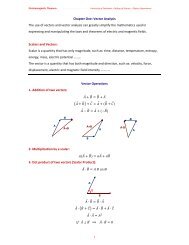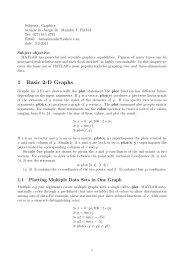Photochemical smog
Photochemical smog
Photochemical smog
Create successful ePaper yourself
Turn your PDF publications into a flip-book with our unique Google optimized e-Paper software.
•Carbon, with an oxidation number (O.N.) of +4, as CO 2 or H 2 CO 3, or HC0 3- ;<br />
• Sulfur, O.N. of +6, as SO 4 ;<br />
• Nitrogen, O.N. of +5, as NO 3 ; and<br />
• Iron, as Fe(III) , in the form of insoluble Fe(OH) 3.<br />
Near the bottom, in the hypolimnium, the water is oxygen-depleted since it has no<br />
contact with air and since 02 is consumed when biological material, such as the dead<br />
algae that have sunk to these depths, decomposes. Under such anaerobic conditions,<br />
elements exist in their most reduced forms:<br />
• Carbon, with an O.N. of -4, as CH 4 ;<br />
• Sulfur, O.N. of - 2, as H 2 S;<br />
• Nitrogen, O.N. of -3, as NH 3 and NH 4 +; and<br />
• Iron, as Fe(II), in the form of soluble Fe 2+ .<br />
Anaerobic conditions usually do not last indefinitely. In the fall and winter, the top<br />
layer of water is cooled by cold air passing over it, so that eventually the oxygen-rich<br />
water at the top becomes more dense than that below it and gravity induces mixing<br />
between the layers. Thus in the winter and early spring the environment near the<br />
bottom of a lake usually is aerobic.

















